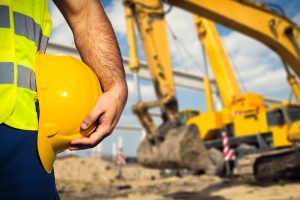 There’s always more that can be done to reduce our environmental footprint. Despite local and federal regulations, construction still is a large contributor to pollution. In order to combat this, construction operations should use smart solutions to protect our ecosystems, prevent environmental incidents, and improve sustainability.
There’s always more that can be done to reduce our environmental footprint. Despite local and federal regulations, construction still is a large contributor to pollution. In order to combat this, construction operations should use smart solutions to protect our ecosystems, prevent environmental incidents, and improve sustainability.
Construction general liability insurance is designed to assist you if you cause environmental damage, but don’t rely on that as the sole means of defense. In addition to having an insurance policy that has been specifically designed for the construction industry (and designed to cover pollution-related exposures), implement these best practices for minimizing pollution.
Proper Planning
Pre-planning of all on-site activities will directly impact how everyone onsite will act towards preventing environmental consequences. Plan material usage carefully. The materials used throughout the project make a huge difference.
Inspiring and Educating
Collaborate and inspire project stakeholders to achieve the greenest project possible by guiding decisions early in the process. Influence the choice of safer materials and install systems that create long-term value and efficiency in the building.
Educate colleagues and clients whenever you can by keeping up-to-date on the latest environmental research. This will allow you to find new ways of protecting our soil, water and air, and our own health. Such information and solutions should circulated within the industry as often as possible.
Designing
Designing a building to support adaptation, disassembly and reuse can reduce waste and extend its useful life. This can also avoid building removal altogether, and allows materials to be easily taken apart for further reuse.
By designing in this manner, practitioners are finding new opportunities early in the design process to reduce environmental impacts.
Consider these strategies:
- Develop plan with key information (drawings, materials, key components, structural properties, repair access).
- Use simple open-span structural systems and standard size, modular building components and assemblies.
- Use durable materials that are worth recovering for reuse and/or recycling.
- Limit use of different types of materials.
- Make connections visible and accessible.
- Use mechanical fasteners such as bolts, screws and nails instead of sealants and adhesives.
Using Salvaged Materials
The market for recovered material is made of outlets that differ in the size of operations, the type of materials sold and how the materials are prepared for sale. Reuse centers represent a small percentage of the total number of reuse retail businesses, but hold the largest variety of materials. Reuse stores also carry smaller amounts of materials that are normally higher in value. Materials and waste exchanges are for buying and selling recyclable commodities are sometimes warehouses that advertise through printed catalogs, while others are websites that connect buyers and sellers.
About Provident Protection Plus Insurance Agency
At Provident Protection Plus Insurance Agency, we want to ensure your high-net-worth homes are protected during the holidays and year-round. Our homeowners’ insurance policies are designed specifically to protect affluent homes like yours. To learn more about our coverage options, contact our specialists today at (973) 579-6776.



